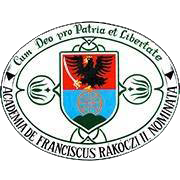Please use this identifier to cite or link to this item:
https://dspace.kmf.uz.ua/jspui/handle/123456789/3533| Title: | До історії досліджень давньоугорських поховальних пам’яток Закарпаття |
| Other Titles: | To the history of the research of the ancient hungarian burial monuments of Transcarpathia |
| Authors: | Kész Barnabás Кейс Борнобаш Kész Margit Кейс Маргаріта |
| Keywords: | Закарпаття;давньоугорські поховання;археологічні джерела;кладовище в с. Чома |
| Issue Date: | 2022 |
| Type: | dc.type.study |
| Citation: | In Україна: культурна спадщина, національна свідомість, державність. 2022. Випуск 35. с. 195-214. |
| Series/Report no.: | ;Випуск 35. |
| Abstract: | Резюме. Зазначено, що впродовж тисячоліть територія сучасного Закарпаття була магістраллю та місцем поселення кочівників, які шукали батьківщину. Проаналізовано
те, яку стратегічну роль відіграв оточений полонинами регіон Верхньої Тиси, що є
північно-східними природними географічними воротами Карпатського басейну, у
розселенні кінного кочового народу зі сходу – угорців.
Загальновідомо, що середньовічні писемні джерела, які оповідають про угорське
завоювання, зокрема «Gesta Hungarorum», переплетені з легендами й переказами та
описують умови свого часу (рубежу XII–XIII ст.) на фоні подій, що відбулися за три
століття до їхнього написання. Констатовано, що через літературні елементи й неточності
в літописах дослідники пізнішої епохи поставили під сумнів і реальні історичні факти, в
них описані. Наведено приклад суперечки, що виникла між слов’янськими й угорськими
істориками щодо оселення угорців, стосунків між слов’янськими корінними жителями
та угорцями, що осіли, і належністю краю. Поставлено за мету підійти на крок ближче
до вирішення цієї дискусії на основі аналізу джерел, особливо закарпатської літератури.
Узагальнено результати археологічних розкопок, які почалися в XIX ст. і чітко доводять,
що угорці, які здобули батьківщину, остаточно оселилися на цій території вже в кінці IX ст.
Стверджено, що деякі зі знахідок на Закарпатті, переважно з поховань, можна
вважати найдавнішими артефактами угорського походження, знайденими в Карпатському басейні. Констатовано, що сьогодні в цьому краї розкопані не лише унікальні
місця захоронень, а й цілі цвинтарі (м. Берегове – Мала Гора, с. Чома – Сіпагат),
більшість із них можна датувати кінцем IX – першою половиною Х ст. Зазначено, що
давньоугорські археологічні пам’ятки Закарпаття становлять єдине ціле з аналогічною
групою знахідок регіону Верхнього Потисся. Вказано, що археологи виявили декілька елітних поховань у регіоні Верхньої Тиси, зокрема на Закарпатті, з чого висновано,
що політичний центр угорців до середини X ст. був розташований у східній частині
Карпатського басейну, а не в Задунайському регіоні, як вважали раніше.
Простежено, що давні угорські археологічні знахідки Закарпаття, зокрема розглянутий у цій статті некрополь с. Чома, привертають все більше уваги угорських та
українських дослідників. Зазначено, що археологи й історики, які представляють різні
школи та напрями, тепер прийшли до спільної думки в кількох важливих питаннях,
однак, безсумнівно, необхідні подальші дослідження. Abstract. For thousands of years, the territory of modern Transcarpathia was a highway and a place of settlement for nomads who sought their homeland. In this article, the strategic role, which the Upper Tysa region, the northeastern natural geographical gateway to the Carpathian Basin surrounded by mountain meadows, played in the resettlement of the equestrian nomadic people from the east, i. e. the Hungarians, is analyzed. It is well-known, that medieval written sources reporting on the Hungarian conquest, the «Gesta Hungarorum» (Hungarian deeds) in particular, are intertwined with legends and myths, and describe the events of their time (at the turn of the 12th–13th centuries) against the background events that occurred three centuries earlier. Due to some fi ctional elements and inaccuracies in the chronicles, researchers of the later era questioned the real, historical facts described in these sources as well. For example, Slavic and Hungarian historians have disputed the settlement of Hungarians, the relationship between Slavic natives and settled Hungarians, and the region’s affi liation. The study aims to get one step closer to resolving this discussion based on the analysis of the sources, especially the Transcarpathian literature. The article summarizes the results of the archaeological excavations from the 19th century till now that prove that the Hungarians gained their homeland and settled in this area from the end of the 9th century. Some of the Hungarian fi ndings in Transcarpathia, mostly from burials, can be considered the oldest artifacts of Hungarian origin found in the Carpathian Basin. Today, not only unique burial sites have been excavated in this region, but also entire cemeteries (Berehove – Mala Hora, Tiszacsoma – Szipahát, from the name of the stream Szipa, near which burials were discovered), most of which can be dated to the end of 9th – the fi rst half of the 10th century. Ancient Hungarian archeological monuments of Transcarpathia form a single unit with a similar group of fi nds in the Upper Tysa region. Archaeologists have found several elite burials in the Upper Tysa region, including Transcarpathia, suggesting that the Hungarian political center was located in the eastern Carpathian Basin until the middle of the 10th century, rather than in the Transdanubia region. Ancient Hungarian archeological fi nds of Transcarpathia, in particular the necropolis of the village of Tiszacsoma, which is in the focus of this article, receive more and more attention in Hungarian and Ukrainian historiography. Archaeologists and historians representing diff erent schools and areas have now come to a common denominator on several important issues, but there is no doubt that further local research is needed to answer the questions that arise. |
| URI: | https://dspace.kmf.uz.ua/jspui/handle/123456789/3533 |
| ISSN: | 2223-1196 |
| metadata.dc.rights.uri: | http://creativecommons.org/licenses/by-nc-nd/3.0/us/ |
| Appears in Collections: | Kész Barnabás Kész Margit |
Files in This Item:
| File | Description | Size | Format | |
|---|---|---|---|---|
| Kesz_B_Kesz_M_Do_istorii_doslidzhen_davnouhorskykh_pokhovalnykh_pamiatok_Zakarpattia_2022.pdf | In Україна: культурна спадщина, національна свідомість, державність. 2022. Випуск 35. с. 195-214. | 2.5 MB | Adobe PDF | View/Open |
This item is licensed under a Creative Commons License





